




When Tina Pierce was running for Undergraduate Student Government president in 2000, she was pregnant with her son Andrew. Although she did not win the vote, her legacy was fulfilled when Andrew Pierce, a fourth-year in public policy, was elected USG president in 2022.
Absorbing what he needed to know when he ran for USG president from his mom, Andrew Pierce still looks to her for advice while paving his own way in USG as the third Black president at Ohio State.

Tina Pierce said she’s is a proud Buckeye alumna, serving as the current chief of strategy and belonging for Ohio State’s Alumni Association and a member of the Columbus Board of Education. She earned four degrees at Ohio State from 1997-2009: two bachelor’s, a master’s and a doctorate of philosophy in political science. She also served as a USG senator for social and behavioral science from 1997-98.
Andrew Pierce’s leadership in USG marks a historic term, as this is the first year USG’s executive branch positions and the speaker of the General Assembly are held solely by Black students. Pierce serves alongside Vice President Derek Moore — the first Black vice president of USG since 1983 — and Speaker of the General Assembly Yondris Ferguson.
“Being at one of the largest universities in the country — the largest university in the state of Ohio — which is predominantly white, and which is comprised of maybe 3-4 percent of Black students, it speaks volumes to how not only we select our leaders but also to the experience of which those leaders bring,” Andrew Pierce said.
Though the top leaders in USG are all Black, Andrew Pierce said Moore, Ferguson and himself have different experiences and approaches to leadership.
“I think as you talk to each of the three of
us, you will see how we are all three very different individuals but all have the same lived experience of making sure that we do the best that we can for our communities,” Andrew Pierce said.
Tina Pierce when she was a USG senator, she said there “was a void of Black and brown people.”
“It was very different from what it is now. There were fewer of us in USG, definitely in positions of leadership. I was the only senator of color,” Tina Pierce said.
Tina Pierce said during her time in USG, she implemented diversity center positions, ensuring there was always a person of color serving in the organization. She also was responsible for diverse programming and initiatives that funded student organizations’ efforts to raise awareness about diversity on campus.
“I had a huge responsibility to represent not just the students for social and behavioral science, but also the students of color,” Tina Pierce said. “The USG that I take pride in, that I am committed to helping today and beyond is this USG, which has a firm belief in the recognition that while we can go far alone, we can go further together.”
Tina Pierce continues to advance the Black community at Ohio State in her role in the Alumni Association, creating a culture of belonging that appreciates diversity and expands inclusion within the association.
The positions and programming Tina Pierce created within USG have evolved into the current Justice and Equity Committee as well as the Allocations Committee, both of which have the largest amount of funding in USG’s administration today, she said.
Those are not the only remnants of Tina Pierce’s influence in USG today. Andrew Pierce said he grew up watching his mom in leadership positions and has carried over her values into his role as president.
“My mom has influenced how I move and shake and operate within USG. She taught me how to not just go for a project and do whatever you want, but to be strategic and plan out what it is you actually want to accomplish,” Andrew Pierce said.
Andrew Pierce said he grew up on Ohio State’s campus watching his mom take classes and talk about community organizations. He eventually built his managerial skills by helping his mother start Columbus’ WORTH Foundation — a nonprofit committed to creating change in communities through civic education, leadership development and community engagement organization, according to its website.
Tina Pierce said her son still creates his own path for what it means to be a Black leader at Ohio State.
“Andrew has the great ability to make every opportunity his own; he does not walk in my footsteps. Andrew looks at what I did and reflects on how he can improve upon that to make it better,” Tina Pierce said.
Andrew Pierce said since becoming USG president, he has worked with his administrative team to create an atmosphere in the organization where Black students are not only heard within USG but pushed to reach and serve every group of students on campus.
“It’s really just looking at the needs of not only Black students on this campus and marginalized communities on this campus, but figuring out yes, Black individuals may be the vanguard of social justice in all areas,” Andrew Pierce said. “But how are we as a people ensuring that our community is accepting and advocating for all communities?”
As a first-generation college student coming from a low-income family, Derek Moore wasn’t sure he would ever attend college. Now, Moore serves as the first Black vice president in Ohio State’s Undergraduate Student Government since Eric Seabrook in 1983.
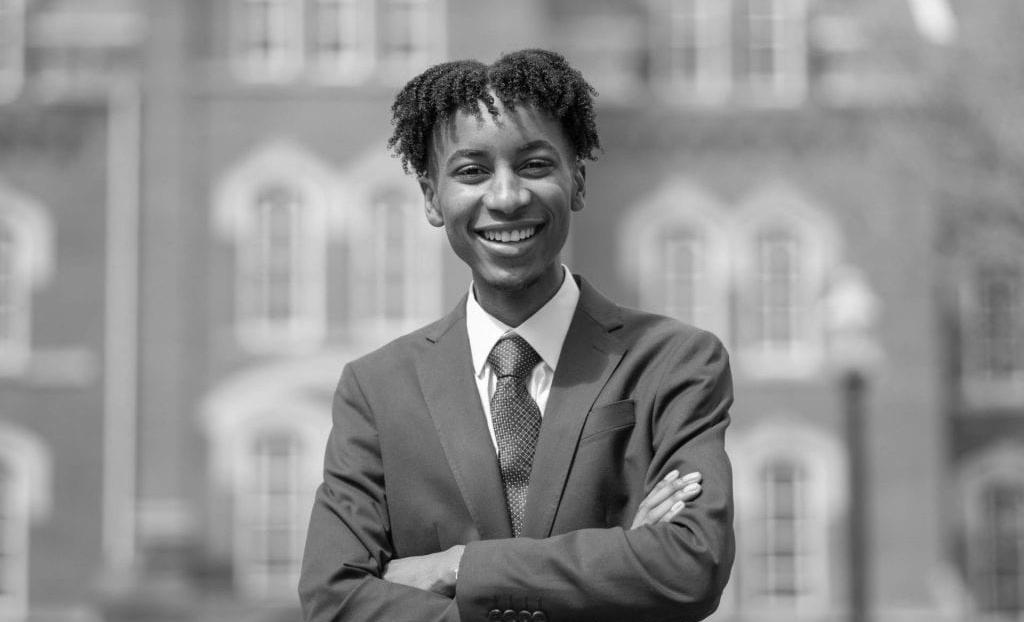
Without financial stability from two unemployed parents, Moore, a fourth-year in information systems, said in an email he was unable to attend college right out of high school. As the most challenging time of his life, Moore took the year after high school to save up for college, eventually enrolling in Purdue University.
“When it was time to move to college (Purdue), my parents still could not financially support me nor had the money to travel with me for my move,” Moore said. “So, there I was, with my 62-year-old grandmother in a mini-van packed with my childhood bedroom, driving across state lines to start my first year in college.”
Moore said he had to drop out of Purdue because he could not afford to return. Taking another eight months to save up, Moore worked hard to re-enroll in college, this time at Ohio State.
“He has always went above and beyond to achieve his goals. He inspires me by his work ethic when it comes to how hard he works to make positive changes in the lives of the people he comes in touch with,” Antoinette O’Larry, Moore’s mom, said in an email.
O’Larry said Moore has exhibited the skills of a leader since he was “a young child.”
“I knew this kid was going somewhere because he would often dress in business suits and carry a briefcase. His mindset was always advanced for a child his age, he loved to lead the pack,” O’Larry said.
During his first few weeks at Ohio State,
Moore said he got involved with the Office of Diversity and Inclusion with former Associate Vice Provost for Diversity and Inclusion Jacquelyn Meshelemiah, researching the university’s history and relationship with marginalized communities.
“I discovered a 2018 Lantern article outlining the experiences of Black men at Ohio State, and I remember I felt like my heart dropped when I read it,” Moore said.
Through his research, Moore said he discovered Ohio State had only accepted 129 Black men out of 7,136, and the GPA averages were alarmingly low in 2017.
“I thought to myself, how will I do this? I felt like I was standing amid an infinite wall of barriers,” Moore said. “Change needed to happen on campus. I didn’t know if I would be the person to do it or if I even could do it, but eventually, I knew I had to try.”
Moore said in his junior year during the 2022 election, he was appointed USG vice president after the elected vice president stepped down, making him the first Black student since 1983 to hold the title. Blindsided by the role he was about to take on, Moore wasted no time jumping into action.
“The role was one of the hardest things I’ve done,” Moore said. “Within my first weeks, I spent over 55 hours a week developing the overall strategy for the organization and building our team. But in the end, it was completely worth it. One of the most rewarding experiences I could ever ask for.”
As a Black student, Moore said he uses his leadership position to combat the feeling of being an outsider on a college campus for other students of color who may be feeling the same way.
“To exist on most college campuses means to exist within an institution that was never designed for you in the first place,” Moore
said. “Identifying this as a root cause of my discomfort opened my eyes to the many other communities that were initially excluded, and it truly shaped my lens in building a more inclusive campus for everyone.”
Moore serves with USG President Andrew Pierce, making the executive branch entirely of Black students.
As vice president, Moore said he has served on the Diversity and Inclusion Board for the Ohio Union Activities Board, where he researches how to better connect the organization with underrepresented groups on campus. He also serves on multiple university committees including the Framework 3.0 Committee in which he works to provide more inclusive planning for students with disabilities, additional affinity spaces like an LGBTQ+ center and the Hale Hall revamp.
Selena Chen, USG’s senior director of communication and a third-year in marketing, said in an email Moore is “like a machine that never stops running.”
“I have never seen anyone more hardworking than him. Even more, he never boasts about his achievements and always acknowledges the contributions of others,” Chen said.
Before he served his term, Moore held
the position of vice chair of policy for the undergraduate Black Caucus as the first Black man in the role. During this time, Moore said he and his team held a forum where Black students could voice challenges and propose ideas for university support.
“From these forums, I learned many of the pain points that students brought up were the cost of transportation as a commuter student. That is what inspired my participation in creating the free Airport Shuttle to and from campus,” Moore said.
The free airport shuttle ran during the winter break of 2022 and helped to eliminate thousands of dollars worth of Uber fees for students. The airport shuttle will return for the upcoming spring break.
Moore said he plans to leave a lasting impact and inspire Black students at Ohio State.
“As I come to the end of my term, my message to Black students on campus who feel like they are standing amid a wall of infinite barriers; you are,” Moore said. “The historical and current exclusion of the Black identity presents an unforeseen strength; the resilience to face a wall of infinite barriers and be the first to knock them down every time, and that is Black History.”
‘It was worth it’: Derek Moore speaks on governing, what got
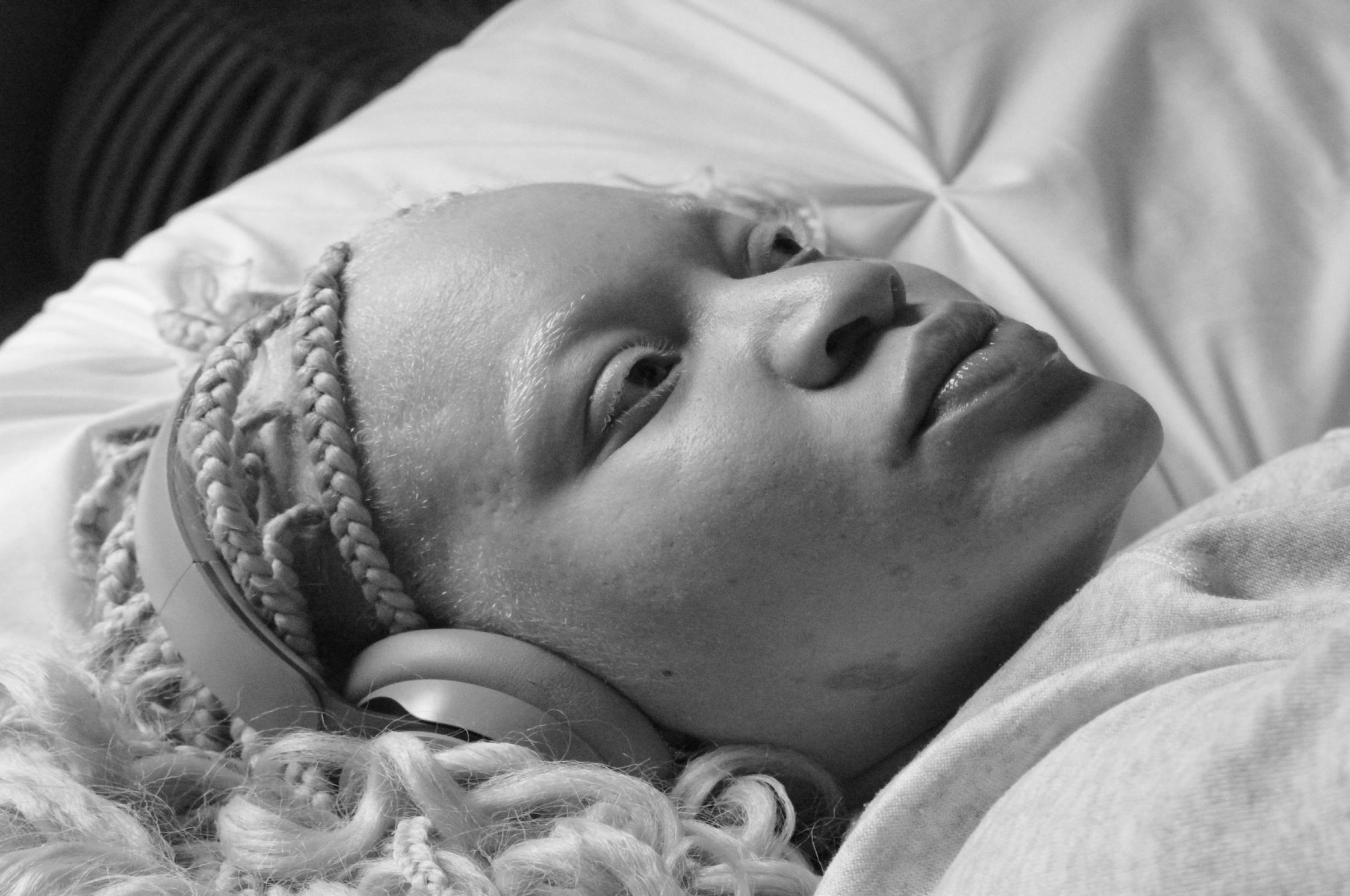 AMANI BAYO Black x Bold bayo.6@osu.edu
AMANI BAYO Black x Bold bayo.6@osu.edu
Blackness is often defined by the state of belonging to a group of people with dark skin.
Skin color and the perspectives it sparks is one of many shared experiences Black people in the U.S. have.
This definition, however, can be troubling, as it disregards the versatility that exists within the Black community. Essentially, there’s more than meets the eye when defining Blackness beyond skin color.
Those that experience skin conditions, such as albinism, have noticeable skin color differences that can impact the development of Black identity.
Dr. Stephanie Trovato, assistant professor in dermatology at the Wexner Medical Center at Ohio State, defined albinism as a genetic condition that results in little to no melanin pigment in hair, eyes and skin.
Trovato said pigment disorders can be more common in darker skin tones, and the noticeable color contrast can create difficulties in self-confidence.
“Patients with chronic skin conditions can be vulnerable to social pressures, as sometimes these skin conditions can be visible to the outside world, they may face obstacles feeling confident and comfortable in their own skin,” Trovato said. “It is important to support patients through their chronic skin conditions and assess how much it may be affecting their quality of life.”
Trinity Dort, a third-year in biomedical engineering with albinism, defines Blackness not by the amount of pigment in her skin but by the experiences Black people could relate to.
“I didn’t even know I had albinism until I was 14,” Dort said. “Nothing about my childhood was different because I had albinism.”
Trinity Dort defines her Black identity as the shared experiences she has with other Black people. Despite experiencing albinism, which is rare condition that causes a lack of pigment, Dort said her noticeably Black features and cultural upbringing is all she needs to define her Blackness.
Dort said she does not consider her lack of pigment to be a defining factor in who she is. She said her African American and Haitian upbringing played a prominent role in discovering who she is as a Black woman and allowed her to see herself beyond her skin complexion.
“I think that being Black has prepared me for being in spaces where people don’t look like me,” Dort said. “In terms of my albinism and defending my identity, there’s nothing to defend.”
Born and raised in a tight knit community in New Jersey, Dort was raised in a Black community and was never treated differently because of her rare skin condition.
“I feel like my Blackness is defined by the shared experience I have with other Black people,” Dort said. “Black is to be in spaces that were built by you but were never meant for you.”
From family cookouts to playing spades — a popular trick-taking card game in the Black community — and wearing cornrows, Dort said she was raised in a Black culture that played a more active role in her identity than the physical differences of albinism.
“Growing up where I grew up, I never had gotten my race called into question. I was just always perceived as Black, which is how I perceive myself. I think I have really Black features,” Dort said. “If it hadn’t been like that, so much of my identity would have been tied to albinism it would become one with who I am and not something separate.”
Dort said she has found comfort in the fact no two people look the same. She said her family helped build her confidence as a Black woman which has led her to appreciate her distinguishing Black physical traits.
“I love being Black, I love everything about it, I literally wouldn’t want to be anything else,” Dort said.
Though Dort’s Black identity was nurtured and supported through Black culture, others with albinism — like Ngozi Onimoe, a fourth-year in psychology — describe a different kind of struggle. Onimoe said she experienced a harsher social stigma due to her albinism that impacted her Black identity.
“As a kid, trying to navigate through the school system was difficult,” Onimoe said. “I was just constantly bullied and made to think that I was ‘othered.’”
CONTINUES ON PAGE 5
CONTINUED FROM PAGE 4
Raised by Nigerian parents, Onimoe often struggled to develop a sense of belonging in social environments, yet she managed to grow into her identity as a first generation African American.
“In a way without realizing it, I kind of just grew into my own Blackness,” Onimoe said. “It really wasn’t until I entered college that I was somewhat stable in my identity as a Black person.”
Onimoe said she was made to feel as if her albinism separated her from her Blackness, which has caused her to only recognize
herself as a person with albinism but not under the term “albino.”
Onimoe said the general lack of understanding of skin conditions prevalent in the Black community perpetuates a cycle that ostracizes affected individuals from feeling like they belong.
Experiencing albinism led both Dort and Oniome to reject the idea that Blackness exists under a singular monolith.
“I know that it’s different for everybody, but for me, I don’t like the term ‘albino’ just because it has a negative stereotype attached to it,” Onimoe said. “To be Black
is to have African ancestry. There are billions of us, there’s no way for us to look the same.”
CHANTAL BROWN Black x Bold brown.7317@osu.edu
Students carry backpacks, DoorDash drivers carry food and anyone can carry a mood.
The streetwear clothing brand, Carry A Mood, crafted by a self-taught artist Cleveland native Tahlayah Morrow, emphasizes and communicates the importance of mental health, self-expression and self-reflection.
Morrow, a fifth-year in psychology and fashion and retail studies, said she creates art and concentrates on mental health. However, the traditional visual artist and graphic design route did not catch her eye as much as fashion.
Morrow said she officially combined her passion for fashion and interest in mental health into Carry a Mood in June 2021. Although it gets interpreted in multiple ways, Morrow said the name of the brand has to do with how people perceive their emotions.
“Essentially we carry our mood, like that’s on our person 24/7,” Morrow said. “It’s constantly changing just like the way we
change our clothes.”
Morrow said streetwear is the most customizable form of fashion that allows freedom and variety, which is why she chose this method to incorporate into her brand.
“You can make business attire streetwear, it just depends on how you put it together,” Morrow said.
To navigate the social entrepreneurship space, Morrow joined a cohort of students who are a part of the Keith B. Key Buckeye Social Entrepreneurship Program. According to the program’s website, SEA Change Cohort partners with local nonprofit SEA Change which guides businesses through a 14-week development curriculum.
“With us, Tahlayah has just been going through the curriculum building out a sustainable financial model doing some more customer validation, customer, resources, and research,” Mallory Masarik, senior program director at SEA Change, said.
Morrow said she not only wanted to learn how to create an avenue for diversity in fashion but she also wanted to include a level of comfortability in the clothes she wore.
“Growing up in Cleveland, I was a kid who hit puberty faster than the rest of my peers,” Morrow said. “Just based on my genetics for the rest of my family. I was going to be a bit thicker. I was gonna have bigger thighs and things like that, and I was always sexualized as a kid. So, I wore baggy clothes on purpose because you cannot see if you can’t see something. You can’t make the pre-judgment on it.”
Eager to create a diverse array of clothing, Morrow said she was bursting with ideas for her young business which led her to enter the Urban Launch School, a program

hosted by the Urban Business Development Center, in March 2022.
The U CBUS Founder, LoLo Mychael, said the center helps bring culturally competent resources to Black and brown businesses that are in the ideation stage or other earlier stages in development. Mychael said Morrow was a part of the inaugural cohort of the 12-week-long program.
CONTINUES ON PAGE 6
COURTESY OF URBAN BUSINESS DEVELOPMENT CENTER (THE U) Tahlayah Morrow concludes her presentation with The U CBUS CEO LoLo Mychael at the Urban Launch School Pitch Competitions in Downtown Columbus in April 2022.CONTINUED FROM PAGE 5
Mychael said she has seen growth in Morrow after watching her encounter common challenges new entrepreneurs face.
“Something that I see oftentimes is that it can be very difficult to slow down and build a strong foundation, something that is sustainable,” Mychael said.
In an era where entrepreneurs and creatives seek instant gratification, Mychael said Morrow had issues with organizing her ideas.
“The thing with Tahlayah was she was not necessarily in a hurry, but the process real-
ly allows you to slow down and think ‘This is what I do. This is what I am good at. How can I make that into an actual business model?’” Mychael said.
Mychael said Morrow and many others are interested in the social enterprise space because they are interested in solving the world’s problems. For Morrow, the most important issue is raising mental health awareness.
Morrow said clothes are just one part of the experience offered by Carry A Mood. Soon, Carry a Mood will offer creative workshops with group-based discussions about self-confidence and mental health.
“I offer this subpart, this community in the sense where we are actively putting in that work for that conversation centered around mental health and actively trying to change the imagery around mental health and try to make it normal,” Morrow said.
On top of maintaining her own mental health with a fair work-life balance, Morrow said one of the most challenging things she experiences as a new business owner is talking about her brand.
“You don’t want to sound like a broken record, but you still have to inform people of what it is,” Morrow said. “The nervousness behind it and being confident every time I go talk about it. But another part of my
business is transparency. I’m not perfect, I have my days.”
Despite this, Mychael said Morrow has transitioned into being an example for others who are in the early stages of being a business.
“Her as an individual, the confidence that I see in her now, it’s like she’s a walking light, and I would like to think of her being a part of the program, like I know I’ve seen it myself, it unleashed the confidence in her to be able to believe in what she’s doing and to be vocal in a way that’s helpful for others,” Mychael said.
FRANCES DENMAN
The Lantern denman.84@osu.edu
In honor of Black History Month, Hammond Harkins Galleries’ “Winter Selections” exhibition showcases a diverse assortment of art inspired by Black history and culture through March 12.
The exhibit at Hammond Harkins Galleries, located at 641 N. High St., will include the life works of award-winning multimedia artist Aminah Robinson and the work of visual artist Annie Chrissy Burley. Born Feb. 18, 1940, Robinson was a Columbus-based artist who used unconventional materials — such as fibers, buttons and even music boxes to create paintings, sculptures and fabric works — until her death in 2015, Chet Domitz, Hammond Harkins Galleries associate, said.
Hammond Harkins designed “Winter Selections” to display an all-encompassing range of styles and mediums from landscapes, still lifes, abstract works, sculptures, paper works and fabric works. The contributions of 19 artists represent creators of all ages and backgrounds, Domitz said.
In dedication to what would have been Robinson’s 83rd birthday in addition to
Black History Month, a section of Hammond Harkins’ current exhibition captures the progression of Robinson’s artistic career, Domitz said.
“We have works from when she was very young — I think the youngest is when she was 10 — and then we have a much larger, very different kind of work that is more of a monumental figure that Aminah did in honor of the women of the Blackberry Patch, which was a community that was part of Columbus’ Poindexter Village,” Domitz said.
Burley — who works with paint skins, pen drawings and animation — said her piece in the exhibition, “Hole in this Theory,” explores the image-bearing nature of Black women.
Burley’s animated character in “Hole in this Theory” was inspired by the Japanese anime television series “Neon Genesis Evangelion” and its main female character, Rei Ayanami, she said. The inspiration stemmed from the contrast between the ways in which Black women are displayed in media as opposed to female Japanese anime characters like Ayanami.
“There are certain stereotypical representations of African American women that don’t have a specific nuance that’s granted
to other characters of other races, for instance,” Burley said.
While Ayanami and similar anime characters are depicted as delicate and feminine, Burley said Black women are often confined to what she refers to as the “big Black woman” archetype, which defines Black women as loud, boisterous and hypersexual.
“[Ayanami] had a lot of bandages on, coming from that sense of that fragility. She’s commonly represented as this walking-talking-bandaged-up, cute, beautiful, mysterious Asian woman,” Burley said. “They’re vulnerable, soft, always needing to be saved in a sense but also being, apparently, this godlike being.”
“Hole in this Theory” depicts the overlapping of these two contrasting archetypes. To drive home her message, Burley said she named her character Aniya, similar in sound to Ayanami Rei, the backward version of the name Ayanami.
“This piece itself, I was taking those ideas with this character design I made and merging,” Burley said. “She’s literally the character design of the big Black woman trope, but she is redrawn in poses from ‘Neon Genesis Evangelion’s’ character, Rei Ayanami.”
Physical holes made of brass cover the entirety of the character depicted in “Hole in this Theory,” Burley said. These holes tie into the name of the piece, represent how this perspective on stereotypes doesn’t apply to every situation and relate to Black femicide and violence in the Black community, Burley said.
Domitz said “Winter Selection” visitors will have the opportunity to learn about artists — like Robinson and Burley — and experience their work in the same space, despite their differences in technique. The strength and variety of the pieces and their messages give the exhibition character, Domitz said.
“No matter what the mode is that the artist is working in, it can be very simple, very minimal, or it can be a lot more involved and there will still be quality in the artist’s intention and the final product,” Domitz said. “I’m just amazed at how much good work there is that we can still show in the off-season, and it’s a nice surprise. It’s a very good show, some incredibly strong works.”
CONTINUES ON PAGE 7
CONTINUED FROM PAGE 6
Burley said the diversification of the exhibition will allow guests and potential buyers to get to know local artists and have fun exploring their creations and messages.

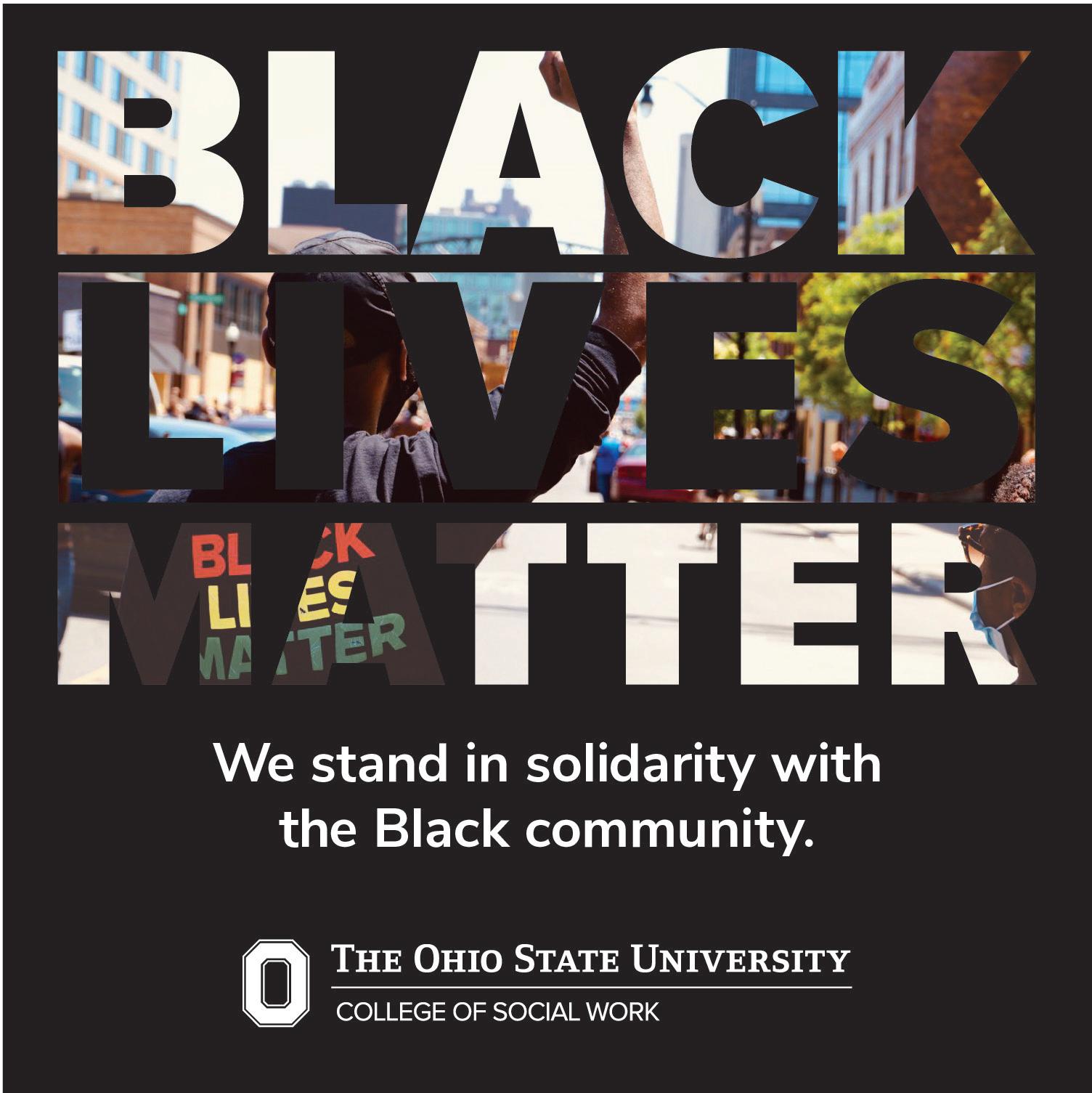
“Some people really just want to view the art and enjoy the art that’s on the wall,” Burley said. “That’s the impact for the public is just being able to really enjoy. Some downtime to really enjoy the work and the artists who are there in the gallery.”

“Winter Selections” will be on display at Hammond Harkins Galleries through March 12 from 11 a.m. to 5 p.m. Tuesday through Saturday, and from 1-5 p.m. Sundays.
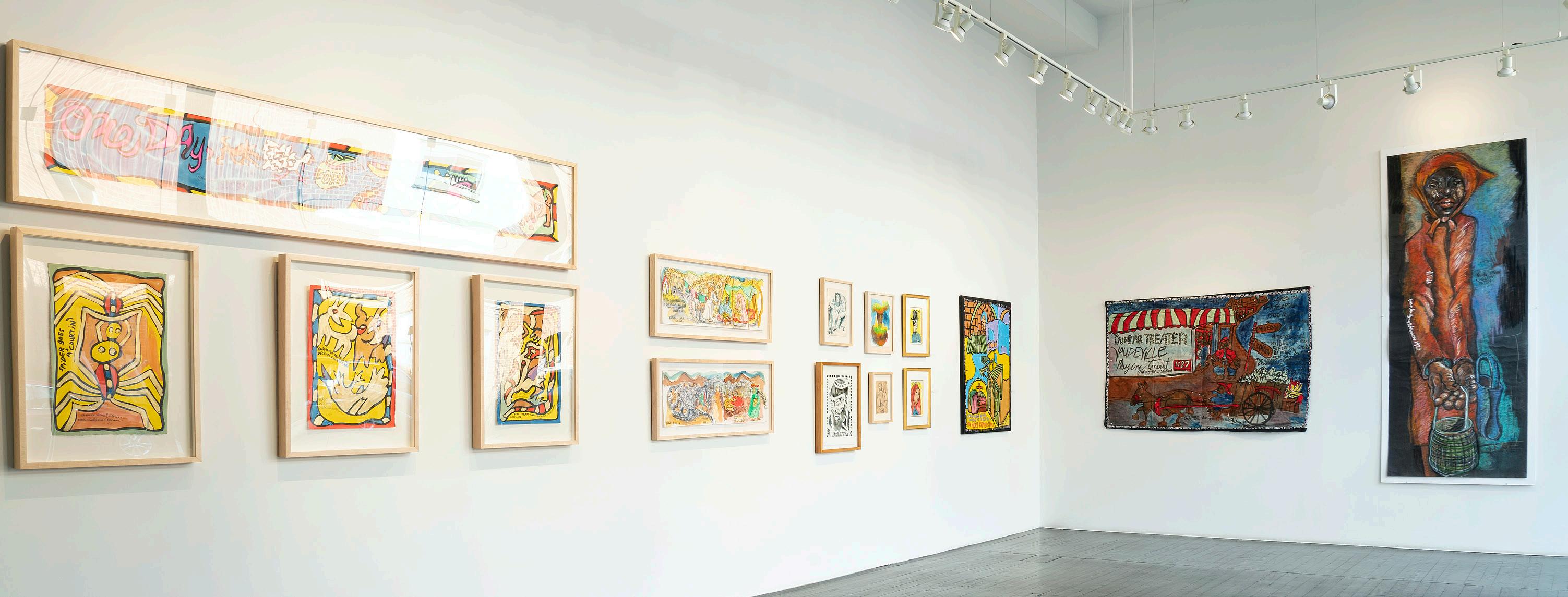
A nurse, writer and scientist. As it turns out, all three can be accomplished in one lifetime, by one person.
Dr. Kathy Wright, assistant professor in the College of Nursing on a tenure track, is known for her work regarding hypertension and how it can lead to cognitive decline and Alzheimer’s disease in older African American populations. Along with this, Wright studies how the self-care lifestyle can lead to maintaining good health.
Wright said her interest since her doctoral studies lied in understanding how stress affected the body both mentally and physically. Wright said her mother’s passing in 2005 inspired her to address the issue concerning African American caregivers of dementia patients.
Wright said she received her Ph.D. in 2013 from the University of Utah followed by postdoctoral studies at Case Western Reserve University, Frances Payne Bolton School of Nursing. There, she received funding to study stress and allostatic load. Wright said this is also where she learned about hair cortisol concentration analysis, which is a method of measuring long term exposure to stress.
“The cortisol that is in your hair grows with your hair so that approximately 1 cm from the scalp out, is reflective of 30 days exposure of stress and it goes all the way to about three months so 3 cm would be three months approximately of stress,” Wright said.
According to Wright’s 2018 study “Collecting Hair Samples for Hair Cortisol Analysis in African Americans,” the benefit of using hair samples to test for the hormone cortisol, compared to saliva, urine or serum samples, is that hair samples allow you to track cortisol release over several months.
Wright said also during her postdoctoral work, she received funding to work with prehypertensive African Americans and used the mindfulness based stress reduction training along with dietary approaches to stop hypertension.
“It was kind of challenging doing that type of work because prehypertension, unlike prediabetes, you don’t hear quite as much about prehypertension and people may not be as invested in making changes because they don’t really understand what that diagnoses is and it’s not really a diagnosis and etcetera,” Wright said.
Wright said she came to Ohio State in 2017 and developed collaborations across the university. This included her work with Dr. Douglas Scharre, a professor of clinical neurology and psychiatry, Ingrid Adams, an associate professor in extension specialist in food, health and human behavior, and Maryanna Klatt, a professor in clinical family medicine who developed the mindfulness in motion intervention that Wright uses in her work.
Wright said the mindfulness in motion and the dietary approaches to stop hypertension, which she refers to as MIM DASH, was successfully done with African American older adults with mild cognitive impairment.
Wright said she received two grants to research and address the issue that African Americans are twice as likely to get Alzheimer’s disease than any other group. Nearly 60 percent of caregivers are Black women, and Black women caregivers are at the highest risk of cardiovascular disease and stroke from hypertension.
Wright said she has two studies being funded, one of which is through the National Institute on Aging and will compare mindfulness in motion and dietary approaches to stop hypertension Dietary Approaches to Stop HypertensionM DASH with general caregiver training. The second is funded by the Robert Wood Johnson Foundation — a philanthropic
organization that works to increase access to healthcare.
“A lot of the literature that’s out there, and the work that’s been done, which there’s been a lot of work done in the caregiver world, focuses quite often on, how best can I take care of a person that has dementia but not enough focuses on specifically, how do I take care of myself, and how do I take care of myself as a Black woman in the context of the roles that I have, as a mother, sister, wife, etcetera,” Wright said.
Dr. Karen Patricia Williams, director of the Center for Women, Children and Youth and distinguished professor of women’s health in the College of Nursing, said as a colleague, Wright is dependable, thoughtful and confident in her area of expertise.
Williams said Wright represents her profession of nursing well, opens herself up to mentoring other individuals and is innately a teacher and mentor to others.
“I think that people would think of her as being a very compassionate, kind individual,” Williams said.
Marissa Ramsumair, a fourth-year dual degree student in pharmacy as a doctoral student and in science and translational pharmacology as a master’s student, said she met Wright through her master’s program. She found Wright’s work interesting, especially the work she does in the community for African Americans.
“She’s just the most caring and supportive person,” Ramsumair said. “She’s challenged me in numerous ways, she’s supported me, she’s cheered me on, so I think she’s just a really good professor, friend and mentor.”

Wright said she was determined to pave the way for other students of color, and hopes to one day create a scholarship to advance students who may not have the opportunities others do financially. She said she resonates with them as someone
who grew up “in the hood” and made it out.
Ramsumair said her time with Wright has presented her with diverse experiences that have prepared her for a professional career as she starts a new position working for Johnson & Jonhson.
“I think she’s given me the opportunity to grow and be more confident as a person and share the knowledge that we’ve learned together in order to kind of advance therapies and health care in the future,” Ramsumair said.
Ramsumair said it was inspiring to see a woman of color doing the work Wright is doing, especially with healthcare being a predominately white field.
Wright said she encourages individuals to enjoy the work they do, never give up, get used to rejection, find mentors to learn from and remember what is important in life.
“Your work should be fulfilling, it should be something that you enjoy, I look at it really as a calling, that I’ve been provided with all of these opportunities,” Wright said.
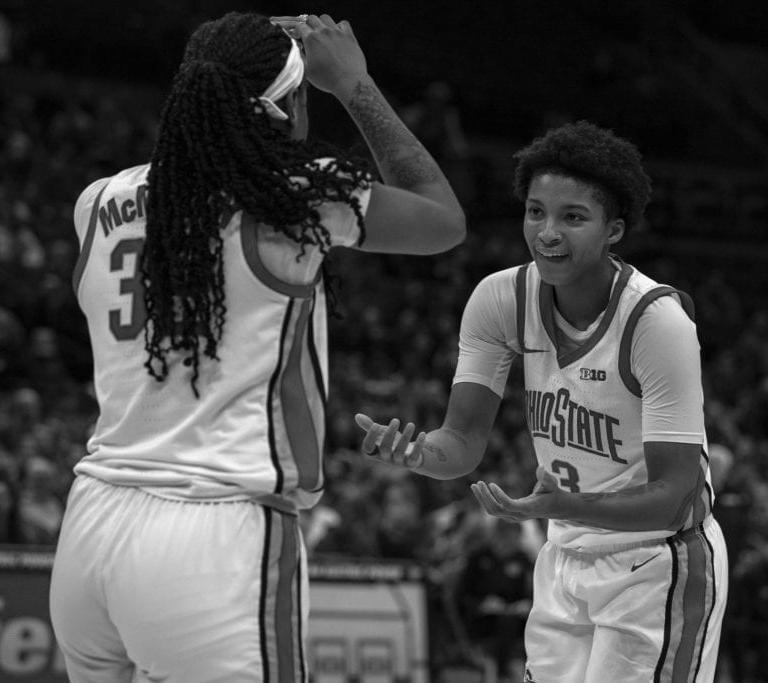 JAYLA VANHORN The Lantern vanhorn.110@osu.edu
JAYLA VANHORN The Lantern vanhorn.110@osu.edu
For most people, February is a month to celebrate Black figures from the past and present. At Ohio State, Black History Month’s involvement spreads beyond the academic campus and into the body of its athletic department.
This year, the Ohio State women’s basketball team celebrated Black History Month through its involvement in apparel design, recognizing Black historical Ohio State figures through gameplay and its connection to Black fraternities and sororities on campus.
Sophomore guard Taylor Thierry said it means a lot to be a Black student-athlete at Ohio State, and she believes the team embraces the opportunity to represent its athletic department.
“I just think we take a lot of pride in being a Black female athlete,” Thierry said. “There’s a lot of us on the team, but we don’t really pay attention to that, but obviously it just feels good.”
Sydney Lambert, assistant director of marketing for the athletic department, said she began her role at Ohio State a few months ago. A former basketball player at Bowling Green State University, Lambert said she has seen changes in the way Black History Month is celebrated within athletics and has included those changes in the work she’s done at Ohio State.
Lambert said at the start of the year, she meets with the women’s basketball coaches and staff to discuss the themes important to the entire team. Within this program, they were passionate about celebrating Black History Month in February.
“This was one in particular that they wanted to do,” Lambert said. “They had a say so on what game they wanted it to be and any ideas that they might have had surrounding this game day.”
Lambert said they decided the Buckeyes would honor Black History Month in their game against Minnesota Feb. 8. The marketing team created videos of players expressing their thoughts and gratitude for their culture and posted messages on social media, highlighting Black players in Ohio State Athletics.
Ohio State Athletics creative team, coaches and administrators also designed and chose the Buckeyes’ warm up T-shirts for Black History Month, Lambert said.
This year, the design of the shirt used inspirational words — like “freedom,” “courage” and “inspire” — in scarlet and gray encircling “Black History Month” to outline the shape of the state of Ohio. This style was similar to last year’s T-shirt design.
While both players like the design of the Black History Month shirts, Thierry and redshirt junior guard Rikki Harris said they believe it is important for athletes to be included and provide input into the design process.
“Of course, it comes down to what the coaches want,” Harris said. “But I think they should definitely listen to our opinion.” Lambert said the team typically collaborates with Ohio State’s coaching staff and tries something new each year. In February, Ohio State invited National PanHellenic Council chapters to perform their stroll on the court during the Buckeyes game versus Minnesota, she said.
During halftime, Lambert said Ohio State showed on the jumbotron a video of the activities and groundbreaking work the Divine Nine — the NPHC’s nine Black Greek-lettered sororities and fraternities — did on campus this school year.
Harris said while she enjoyed watching the fraternities and sororities stroll, the team couldn’t fully focus on the performance, as it occurred while the Buckeyes were in a huddle. Harris said she wants to have a joint community event with NPHC and
believes it could possibly attract more people to come out.
Harris said the team also met former Ohio State guard Kelsey Mitchell in February, and some of the team has had the opportunity to meet NBA players — including LeBron James, one of Ohio State’s most frequent athletics donors. James gifted the women’s team a care package in December that included custom sneakers and, for the first time ever, custom Buckeye Beats headphones.
“It’s always nice to see people you watch on TV,” Harris said. “I think the biggest [person I met] was LeBron because of who he is as a person and how much he means to the school.”
Thierry said celebrating Black History
Month within athletics is another way for student-athletes to show their appreciation for Black athletes who have come before them. Harris believes the team has an obligation to celebrate it and wants to see more of its involvement within the community.
Lambert said she hopes in the next few years that all athletics will perform more informational research about Black History Month, so it spreads awareness to those who might not be knowledgeable in the history.
“I think that the special thing about sports is that it’s so inclusive,” Lambert said. “While the world may be divided, and at some times, sports bring people together, whether it’s as fans or as teammates.”
ZACHARY RILLEY | PHOTO EDITOR Ohio State freshman forward Cotie McMahon (32) high fives senior guard Hevynne Bristow (3) after then-No. 2 Ohio State’s 84-54 win over Northwestern in Columbus Jan. 19.After spending the last 14 years in Los Angeles, Columbus native Ange-Marie Hancock was excited to come home. Yet, when she returned, she found one of the casualties of the COVID-19 pandemic was the permanent closure of her favorite local restaurant, Max and Erma’s.
Although her favorite burger joint may cease to exist, Hancock said she found promise in other, more positive changes
in Columbus through community-engaged research in her new role as academic executive director of the Kirwan Institute for the Study of Race and Ethnicity.
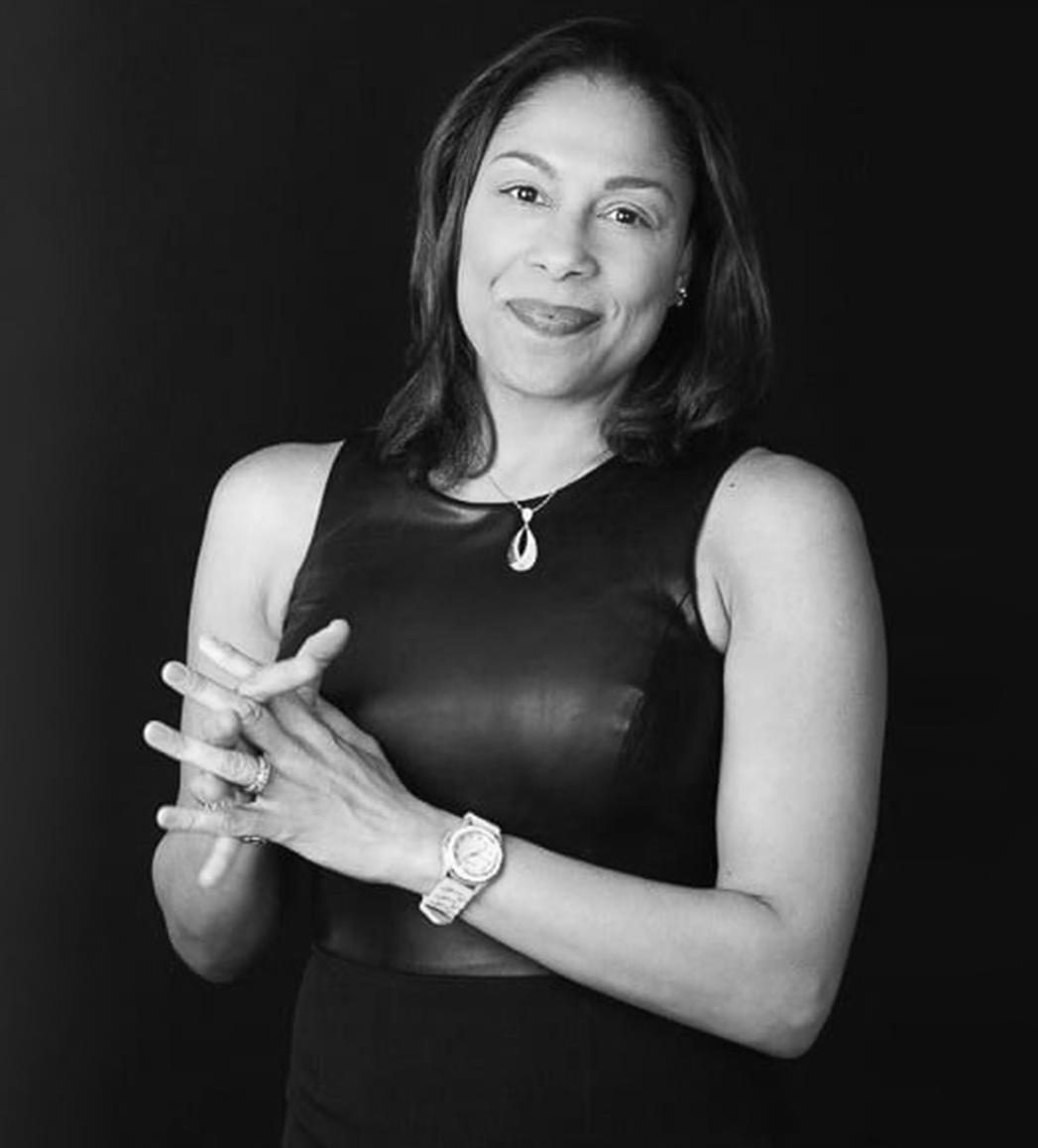
In her new role at the Kirwan Institute, Hancock is set on creating permanent, systemic changes to further build longterm, equitable communities within central Ohio. She said she is most excited to use the data the institute collects to partner with communities and give them the choice to build their futures.
“Kirwan is not going to go around dictating
what communities should have in their futures,” Hancock said. “It’s really, ‘How can we partner with your community to help you figure it out together?’”
Kyle Strickland, compliance specialist at the Kirwan Institute, said the institute’s research will build a more “inclusive place.”
“It’s not research that’s just going to sit on the bookshelves or just stay in academia. It’s really supposed to engage community and make sure that we’re not doing research to communities, but with communities,” Strickland said.
Hancock previously held positions at University of Southern California as department chair and dean’s professor of political science and international relations. During her time at the university, she also directed the USC Institute for Intersectionality and Social Transformation and the USC Dornsife Center for Leadership by Women of Color, according to USC Dornsife’s website.
Hancock said she conducted work similar to her strategic vision while in Los Angeles with an initiative called No Going Back LA — community members and civic leaders developing long-term changes to help marginalized populations.
Senior Vice Provost for Inclusive Excellence Wendy Smooth said in a statement the university is fortunate to have attracted a leader of Hancock’s caliber, with experience in various scholarly fields ranging from the social sciences to public policy and education.
“[Hancock’s] insights will help us to surface 21st century questions rooted in race and ethnicity but that extend to how we understand the confluence of systems that inform our identities whether we think of urban or rural dimensions of identity or the economically vulnerable,” Smooth said. “She is a trusted thought leader who will add to the university’s ability to lead on these complex issues that impact
Ohioans and the nation.”
Strickland said Hancock has a “vision of where she wants to take the Kirwan Institute, thinking about how we can embrace the past 20 years of the institute and then also moving forward in the future.” He said she also knows “this vision is a part of a broader collaboration with other staff, other community members.”
Hancock said she is eager to conduct more collaborative research in her new role and reach a vast array of topics — such as employment, health disparities and education.
“We really want to become a multi-issue organization,” Hancock said. “What I’d like to do is to really set up and make sure that we could communicate on maybe up to 10 different issues at the same time, right? And really look at the changing populations in the state of Ohio.”
Hancock will be sharing her strategic vision plan March 9 in which she will explain how the institute can embrace and honor its past work while continuing to grow, Strickland said.
Hancock said through her new position, she wants to combine the best aspects of the past and future.
“I just want to make sure that the things that I really love about Columbus and that we all love about Ohio — that we keep what’s good, and then we also make room for what might be new,” Hancock said.
Affirmative Distraction continues the humorous interaction for its fifth year in the Columbus area through improv comedy.
Affirmative Distraction, founded in May 2018, is Columbus’s only all-Black improv troupe, Anthony Windsor II, a performer of the 11-person troupe, said. With audiences exceeding 100, Affirmative Distraction continues its streak of over 30 sold-out shows. The shows occur once a month at the Columbus Funny Bone, and tickets can be purchased online or at the door.
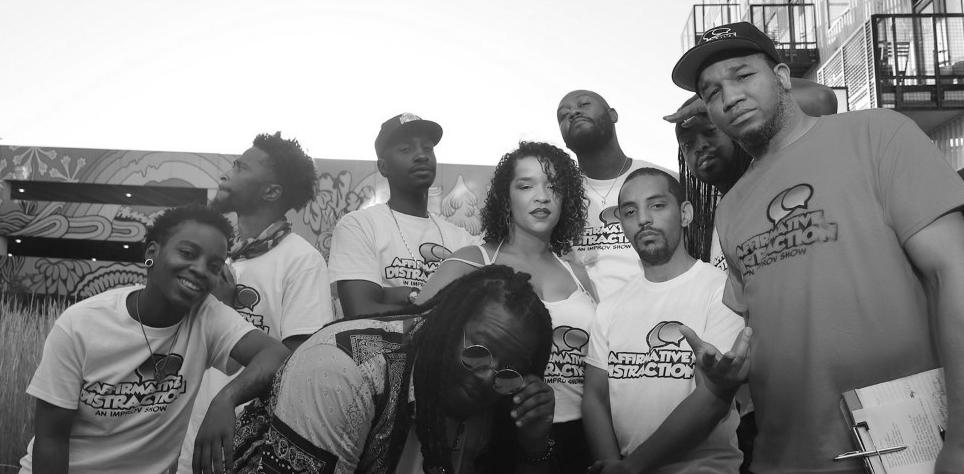
“It’s not just improv, it’s a celebration of Black culture as a whole,” Windsor said. “It feels impactful. It’s inspirational in a lot of ways.”
Joseph Moorer, founder of Affirmative Distraction, said he had the idea when he noticed a trend of exclusion within the art form.
“I started AD because there was a huge omission of Black improvisers,” Moorer said. “I wanted us to be able to occupy a space that allows us to be funny and weird without being judged or taken advantage of.”
Affirmative Distraction is collaborative, bringing the Columbus community together for a 90-minute show of hanging out and laughter, Moorer said.
“If we can distract you from the insane world for, you know, that amount of time, we’ve done our job,” Moorer said.
At the end of Affirmative Distractions shows, two teams partake in a game of Versus Us, where audiences write down made-up songs for each team to take turns drawing, challenging them to create a song on the spot, Windsor said.
“It’s an amazing way to end the show,” Windsor said. “My jaw drops every time I see it.”
As traditional rules of improv are often set aside for more organic moments, the show relies heavily on audience participation. Affirmative Distraction welcomes local celebrities — such as Quamil, B.Yonest and Ro Tha Realest — rather than other improv comedians, as their guests of choice, Moorer said.
“It’s the first and last time, the only time, that show will have ever been done,”
Windsor said.
Affirmative Distraction works to be bigger than a comedy show by opening doors for historically underrepresented groups, Windsor said.
“I am really proud to be a part of this community,” Windsor said. “The amount of support we get from the people who come out and see us every single month. It’s what keeps me going.”
Windsor said he looks forward to seeing more minority-led improv groups created in the future.
“We don’t have to be pigeonholed to be rappers or athletes,” Moorer said. “To open that door and show that not only we can do it, but you can do it too.”
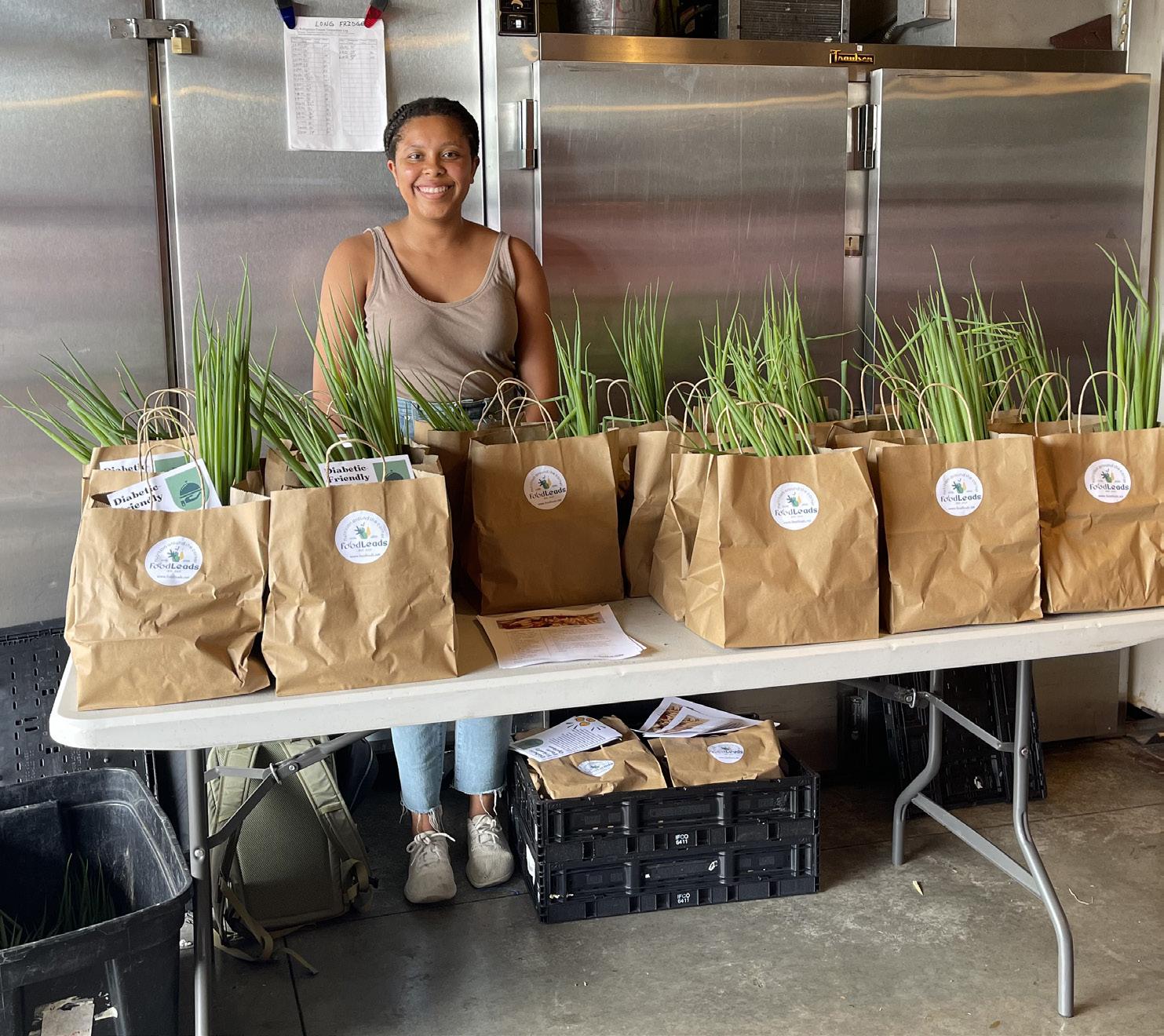 SHARON NIMYEL The Lantern nimyel.1@osu.edu
SHARON NIMYEL The Lantern nimyel.1@osu.edu
According to the National Institutes of Health, Type 2 diabetes — often linked to weight gain and food insecurity — affects Black adults more than twice as frequently as their white counterparts in the U.S.
Christina Allen, founder of Food Leads, wants to increase food accessibility and sustainability for diabetic patients in Columbus. As one of two graduating seniors to receive the 2021 President’s Prize at Ohio State for $100,000, Allen said she used those funds to launch Food Leads to assist people with pre-diabetes and diabetes in managing their conditions by offering free meal kits.
“We are a community organization that’s invested in taking an equity approach to relieving some health disparities that are experienced specifically in Black lowincome communities in Columbus with diabetes,” Allen said. “Our mission is to alleviate the food access and nutrition barriers that surround diabetes prevention and management for Black communities.”
Allen said most of her family have been diagnosed with Type 2 diabetes. When her father was diagnosed, he wasn’t given proper education on dieting. This motivated Allen to start Food Leads to help Black people with diabetes manage their conditions, she said.
Allen decided to expand the horizon of her organization by working on a nutrition education pilot program, a six-week program for diabetic and pre-diabetic people from low income communities. Allen said medications are offered to those managing their conditions, but not dieticians who can teach them how to eat and prepare healthy meals.
According to the Centers for Disease Control and Prevention, adults who suffer from food and nutrition insecurity are two to three times more likely to have diabetes
than people who do not experience these same challenges.
“People who are food insecure are much more likely to have diabetes and much more likely to have uncontrolled diabetes,” Allen said. “We all know that it should be paired with lifestyle changes to support reversing and managing diabetes.”
Allen said Food Leads partners with All People’s Fresh Market, as well as Linden Market in Columbus to deliver fresh produce meal kits to people with diabetes. She said the meal kits are free and delivered every week. In its pilot program, Food Leads served 50 meal kits, according to its website.
“They are essentially food produce put together to help gain knowledge and improve the cooking skills of diabetic friendly meals,” Allen said.
Allen said Food Leads has a diabetes enrollment program in which people who are diabetic or pre-diabetic can sign up to receive meal kits weekly through Food Leads’ website. She said she hopes food incentives come together to help battle food insecurity in the future.
“We want to be a facilitator to encourage the food system to become more interconnected and support marginalized people on the consumer and the producer side,” Allen said. “My second goal would be just for organizations to keep building sustainability.”
Jill Clark, associate professor in the John Glenn College of Public Affairs, said she and Allen were both concerned about addressing food security, and they collaborated on numerous projects and amounts of research before Allen established Food Leads.
“She was an exceptional collaborator,” Clark said. “She is an exceptional community member and change leader.”
Food Leads owner Christina Allen sets on making food accessible to help Type 2 diabetics patients manage their conditions.
Clark said Allen used her knowledge, some research and effective community partnerships to assist in putting together Food Leads, ensuring it fulfilled neighborhood needs.
“When I think of Food Leads, I think of a project that is in tune with our community members’ wants and needs,” Clark said. “Allen was very careful to ensure that her ideas resonated with the people she would be working with.”
Clark said there is a difference between treating a symptom and managing the disease. There is a disproportionate rate of diet-related diseases like diabetes, and some communities have a hard time accessing food or education, she said.
“The solution is not necessarily treating but going back to the root sources of the problem,” Clark said. “I think that what Food Leads is doing is treating the whole
person knowing that access and education is a foundational reason why folks have diet-related diseases, to begin with.”
Bolu Ishola, a fourth-year in human nutrition who interned at Food Leads in November 2021, said many initiatives aimed at promoting nutrition do not focus on culture, and many are discouraged from incorporating cultural food when making healthier decisions. She said these initiatives aim to help community members, but Food Leads interacts directly with the community and receives feedback.
“We got to learn a lot from our community members as well as giving them information that was accessible, easy to read and just what needed to be able to have access without having specialists,” Ishola said. “It is saddening that not a lot of people have access to the resources they need.”